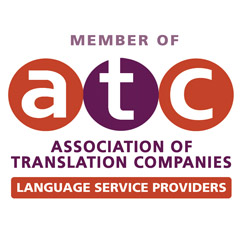Sure, here’s a rewritten version of the paragraph:
“Translation is the skill of moving words or spoken ideas from one language to another while keeping their core meaning, style, and context intact. In today’s globalized world, where businesses reach across borders and cultures mingle, translation is vital for bridging communication gaps. Yet, despite its significance, translation poses challenges that can disrupt clear and efficient communication. In this article, we’ll delve into common translation hurdles and offer solutions to overcome them.”
Linguistic and Cultural Nuances
Capturing the subtle details of language and culture is a major hurdle in translation. Languages are closely linked with their cultures, and words often hold meanings, implications, and historical backgrounds that don’t directly translate. This complexity challenges translators to navigate these nuances to ensure the translated text mirrors the original meaning and cultural context accurately.
To tackle this challenge, translators must possess a thorough understanding of both the source and target languages and cultures. Moreover, collaborating with native speakers and subject matter experts can offer valuable insights into cultural nuances that may not be immediately obvious.
Idioms and Colloquialisms
Idioms and casual sayings can be tricky when translating. These phrases are usually based on the cultural background of a language and might not have exact matches in other languages. Trying to translate idioms word-for-word can cause confusion because the real meaning might not come through accurately.
To handle this problem, translators must really know both the original and the translated languages, including their idioms. Instead of translating idioms word-for-word, translators should try to express the same idea using similar sayings or phrases that make sense in the new language’s culture. This needs creativity and good language skills to keep the meaning clear and the text easy to understand.
Technical Terminology
In fields like medicine, law, or technology, translation can get tricky because of all the technical terms that regular people might not know. Translating these terms correctly needs more than just knowing languages well; it also needs a good understanding of the subject to make sure everything is precise and clear.
To beat these challenges, translators should spend time learning about the technical words related to the topic. They can use special lists of terms, dictionaries, and websites to make sure their translations are consistent and correct. Working with experts in the field or talking with clients can also clear up any confusion and make sure the translation says exactly what it’s supposed to.
Tone and Style
Another problem in translation is keeping the same feeling and style as the original text. Each language has its own way of sounding, its own mood, and its own rules for writing. Making sure these things stay the same when translating needs more than just knowing the languages well; it needs understanding what the writer wanted to say and how they wanted to say it.
To deal with this problem, translators need to really focus on how the original text sounds, its style, and how formal it is. They should try hard to keep these things the same in the translated text. This might mean choosing words carefully, arranging sentences in a similar way, and using similar writing tricks to make sure the translated text feels the same as the original. Working with the writer or editor can also help keep the style consistent and true to the original.
Ambiguity and Multiple Meanings
Language can be confusing because words can mean different things depending on how they’re used. This makes it tough for translators when they come across words with more than one meaning. They have to figure out what the word really means based on what’s around it in the text.
To beat this challenge, translators need to really look at the situation where the tricky words are used and think about what the whole text means. They also need to be aware of how different cultures might understand certain words or phrases. When there’s more than one way to understand something, translators should try to pick the meaning that fits the context best, but they should also let the reader know if there’s still some uncertainty.
How to Overcome Translation Challenges
Though translation comes with its difficulties, there are ways for translators to handle them well. Here are some helpful tips:
Utilize Professional Translators
Hiring professional translators who know the subject and languages well can make sure translations are accurate and top-notch. These experts have the language skills, cultural understanding, and technical know-how to handle tough translation problems effectively.
Use Technology and Translation Tools
Improvements in translation tech have made it simpler for translators to organize their work and get things done faster. Translation tools like computer-assisted translation (CAT) software, machine translation, and terminology management systems can boost translators’ productivity, keep translations consistent, and make sure they’re accurate.
Research and Context Understanding
Thorough research and context understanding are essential for producing accurate and culturally appropriate translations. Translators should take the time to familiarize themselves with the subject matter, context, and intended audience to ensure that their translations are contextually relevant and convey the intended meaning effectively.
Collaboration and Feedback
Working together with clients, experts in the field, and people who speak the language natively can give translators useful advice and feedback that makes translations better. Translators should ask for feedback and talk openly to sort out any issues or uncertainties, making sure the final translation is what the client wanted.
Continuous Learning and Improvement
Translation is always changing, so translators need to keep up with new language trends, changes in culture, and advances in technology. They can do this by learning new things through training, language classes, and meeting other translators. This helps them get better at what they do, learn more, and adjust to the changes in the translation world.
Conclusion
Translation is a detailed and complicated task that needs thinking about language, culture, and the situation carefully. Even though there are challenges, translators can beat them with the right plans and skills. This lets them make top-notch translations that say exactly what they’re supposed to in different languages and cultures.
FAQs
1. What are some common challenges faced by translators?
Translators face many difficulties like understanding language and culture differences, dealing with idioms and everyday language, handling technical terms, keeping the same tone and style, and sorting out confusing meanings.
2. How can translators overcome linguistic and cultural barriers?
Translators can break down language and cultural barriers by deeply knowing both the original and target languages and cultures, working closely with native speakers and experts in the field, and using helpful translation tools and resources. To beat language and culture barriers, translators need to really know both the original and translated languages and cultures. They should work closely with native speakers and experts in the field, and make use of translation tools and resources.
3. Why is it essential to preserve the tone and style of the original text in translation?
Keeping the same feeling and style as the original text is really important. It helps keep the author’s voice and what they meant clear, makes sure the writing flows well and is easy to read, and gets across the message to the right people.
4. How can translators continue to improve their skills?
Translators can get better by always learning, taking part in training, language classes, meeting other translators, and keeping up with changes in language, culture, and technology.
Find more on www.traductoresabc.com




